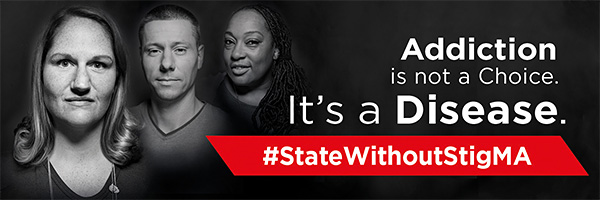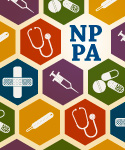April 13th, 2016
How Do You Treat an Epidemic?
Elizabeth Donahue, RN, MSN, NP-C
I have been in my current clinical role — an NP primary care provider carrying my own panel — for almost a year now. Opening a new practice and introducing such a role has many challenges; one of these is the influx of new patients — specifically, obtaining histories and making treatment decisions for patients whose medical histories are unknown except for what they report.
A few weeks ago, I met my fourth new patient of the day, a man transferring care from out of state and needing refills on all of his current medications. That list happened to include suboxone for the simultaneous treatment of the chronic pain he experienced from a remote traumatic brain injury and the substance use disorder he suffered as a result of treating that pain with opioids for years. Because he had been receiving his medication from his former out-of-state provider for the nearly two months it had taken him to find a primary care provider in Massachusetts (see my previous thoughts on that topic here), he was due for refill on his suboxone within a week of his visit with me. Herein lies a major problem: I want to be able to provide this essential treatment for this patient and so many like him, but as a nurse practitioner, I cannot obtain a DEA X license that would allow me to do so. And even in a well-resourced state like Massachusetts, I fear that this patient will face barriers to continuing his treatment and may relapse.
Despite this hurdle, I was feeling optimistic about my ability to care for this man and others going forward because I was signed up for a health policy workshop dedicated to learning about the opioid crisis and how clinicians can understand the trends and “bend the curve.” Arriving at the workshop, I sat down eager to learn and soon found myself stunned by the breadth and depth of the opioid abuse epidemic. I also felt a bit irresponsible that I hadn’t educated myself earlier and gotten involved sooner. So here’s what I learned, and how I hope all clinicians can help.
We were welcomed by Dr. Monica Bharel, Commissioner of the MA Department of Public Health, who shared some information about the source of the problem. It was not surprising to learn that a great majority of substance use disorders start with the prescription of opioids. However, it was surprising to hear that most of these opiate prescriptions in Massachusetts are initiated by primary care providers — not surgeons or specialists, but providers like me.
Next, we heard about the scope of the problem based on some data from the CDC — how overdose deaths outnumbered traffic deaths in 31 states in 2010 (up from only 10 states in 2005). The statistics about how many people are suffering became even more overwhelming when I learned that the deaths only scratch the surface of how widespread the problem is. Each death is representative of approximately 32 ED visits for misuse/abuse, and each death represents nearly 130 people who misuse opioids or suffer from opioid use disorder that has not yet escalated. Finally, we heard about shortcomings regarding current solutions to the issue: Only physicians can obtain a waiver to prescribe needed agonist medications to treat opioid use disorder, yet only 1–5% of physicians in each state have applied for and obtained the license needed to prescribe this life-saving treatment, and those physicians are limited to treating 30 to 100 patients. More surprising statistics from my own research included this: Only 50% of addiction treatment centers offer medications, and in those that do, only 38% of patients deemed in need of treatment are offered it.
Thankfully, the speakers moved toward solutions that have already demonstrated success. And I was grateful to hear that there are a range of possible options — from those that can be implemented immediately (without too much pain for already overburdened primary care practices) to long-term solutions currently in the works. An NP colleague from the North Shore, Christine Malagrida, discussed how her practice uses screenings for alcohol use, drug use, and depression at all new patient appointments and annual physicals and then follows up with motivational interviewing techniques and suggestions/resources for the patients who screened positive. Of course, it’s important to know the resources in your area before implementing patient screening for substance use disorder, so that if you uncover an issue, you can direct your patient appropriately.
One model practice initiative in Massachusetts was presented by Colleen LaBelle, a leader in substance use disorder work in Massachusetts and Director of Boston Medical Center’s Office Based Opioid Treatment with Buprenorphine program. The program focuses on a collaborative teamwork model that supports physicians who prescribe agonist medications by providing patient care via nursing staff, case managers, social workers, and others who can address the many other physical and mental health concerns of patients undergoing treatment. This initiative has dramatically decreased ED visits and hospital admissions among those receiving treatment and has increased the number of patients receiving treatment from 0 to >8000 between 2007 and 2014. This type of initiative should be studied and replicated.
 The most encouraging news was about two pieces of legislation that should dramatically increase access to medical treatment of opioid use disorder. The TREAT Act filed by MA Senator Markey would remove artificial barriers that currently limit the number of patients whom physicians can treat, thus allowing more patients to get the care they need from MD providers. President Obama also recently included a $1.1 billion budget line item dedicated to pilot projects that would extend DEA X waivers to nurse practitioners and physician assistants (in states that already have controlled substance prescriptive authority) in order to expand the numbers of prescribers who are able to treat patients needing suboxone for substance use disorder. Nearly 33% of NPs surveyed indicated that they would be willing to prescribe this type of medication. Also, projected growth of NPs and PAs by 2020 is 30% and 58%, respectively (compared to 8% for physicians), so this is a group with a demonstrated interest and growth rate to support a real-time increase in access to care for patients who need it.
The most encouraging news was about two pieces of legislation that should dramatically increase access to medical treatment of opioid use disorder. The TREAT Act filed by MA Senator Markey would remove artificial barriers that currently limit the number of patients whom physicians can treat, thus allowing more patients to get the care they need from MD providers. President Obama also recently included a $1.1 billion budget line item dedicated to pilot projects that would extend DEA X waivers to nurse practitioners and physician assistants (in states that already have controlled substance prescriptive authority) in order to expand the numbers of prescribers who are able to treat patients needing suboxone for substance use disorder. Nearly 33% of NPs surveyed indicated that they would be willing to prescribe this type of medication. Also, projected growth of NPs and PAs by 2020 is 30% and 58%, respectively (compared to 8% for physicians), so this is a group with a demonstrated interest and growth rate to support a real-time increase in access to care for patients who need it.
Inspired to change my practice by this incredibly informative and empowering workshop, I returned to my office the next day. My first patient arrived at clinic under the influence of heroin, which was reported to me by my medical assistant, who completed a routine screening on the patient as part of intake. I was glad to have at least the basics in place, to be asking the right questions, and also to have incredibly knowledgeable and compassionate staff with whom the patient felt comfortable being honest. The patient discussed with me that she has been using heroin daily for the last 4 months after her previous primary care doctor discontinued her prescription for oxycontin as treatment for her lower back pain and a neighbor offered her street drugs as a substitute. She expressed a sincere desire to stop using heroin and find a more appropriate treatment for her back pain, but also felt defeated at the stigma she had experienced at the hands of previous providers. (What could have reinforced the need for opioid abuse treatment to me better than this patient?) Thankful for the assistance of a social work colleague but cursing the delays in legislature and stigma surrounding this problem, I will do my best to care for her with the help of waivered physician colleagues as part of the team. In the meantime, I have signed up for the necessary training so that when the time comes when I can apply for a DEA X license, I will be ready. I hope that you, my provider colleagues, will consider it too.
Below are sources of information on both the staggering statistics and available resources. Though I am by no means an expert on this topic, I now realize that the scope of the opioid abuse problem — which is now THE number one cause of preventable death in the U.S. — is far too large to stand back and watch someone else solve.
Practical resources for providers:
Information and Application for DATA Waiver (DEA X license to treat)
Safe Opioid Prescription Education
Overdose Prevention and Nalaxone Rescue Kits
Screening and interview tools:
- AUDIT http://pubs.niaaa.nih.gov/publications/Audit.pdf
- PHQ 9 http://www.phqscreeners.com/sites/g/files/g10016261/f/201412/PHQ-9_English.pdf
- DAST http://www.bu.edu/bniart/files/2012/04/DAST-10_Institute.pdf
- SBIRT http://www.masbirt.org/sites/www.masbirt.org/files/documents/toolkit.pdf
Reference Sources and Articles of Interest:
- CDC National Vital Statistics System, Multiple Causes of Death. 2010
- The Future of Nursing Institute of Medicine Report. 2011
- HRSA, Health Workforce Analysis. 2013
- CDC/NCHS National Vital Statistics System NCHS Data Brief. March 2015
- SAMHSA Substance Abuse and Mental Health Data Archive. 2016
- Dart RC et al., Trends in Opioid Analgesic Abuse and Mortality in the United States. New England Journal of Medicine, 2015.
- E. Clark et al., The Evidence Doesn’t Justify Steps By State Medicaid Programs To Restrict Opioid Addiction Treatment With Buprenorphine. Health Affairs, 2011.
- LaBelle et al., Office-Based Opioid Treatment with Buprenorphine (OBOT-B): Statewide Implementation of the Massachusetts Collaborative Care Model in Community Health Centers. Journal of Substance Abuse Treatment, 2016.
- Walley AY et al., Office-based management of opioid dependence with buprenorphine: clinical practices and barriers. Journal of General Internal Medicine, 2008.
Special thanks to:
Colleen T. LaBelle MSN RN-BC CARN
Program Director STATE OBOT B
Executive Director MA IntNSA
Laura G. Kehoe, MD, MPH
Assistant Physician, Massachusetts General Hospital
Assistant Professor of Medicine, Harvard Medical School
Medical Director, MGH Substance Use Disorders Bridge Clinic
Christine Malagrida, RN, MSN, CNP
Chief Operating Officer
North Shore Community Health
Monica Bharel, MD, MPH
Commissioner
Massachusetts Department of Public Health
Kiame Mahaniah, MD
Chief Medical Officer
Lynn Community Health Center
Christopher Shaw, NP
NP Team Leader
Addictions Consult Service, Massachusetts General Hospital



Great post. I was considering writing about this as well. The one thing that I think is missing in this discussion is that there is another perspective on the cause of addiction. Many of these drugs or similar ones have been around longer than this current “epidemic”. I offer the following article to show that maybe it is not the drugs themselves, but peoples unhappines and sense of disenfrachisement in an economic recovery that does not include them. http://www.huffingtonpost.com/johann-hari/the-real-cause-of-addicti_b_6506936.html
Thanks Scott for sharing this article. I agree that the source of the problem is complicated and multi-factorial. And that overall, mental health services in the US (not just those centered around treatment for substance use disorder) will require more attention as the needs of the general population shift.
One important point left out of these discussions regarding the opioid epidemic is the likely origin of the problem, and the lessons we should learn therefrom. In the 1990’s pain became the “5th vital sign”. Remember that? In 2001 this became a joint commission standard and providers were forced to treat pain or face consequences. Patients developed an unrealistic expectation that pain level should always be “0 out of 10”, even after major surgery. Vital signs used to be something objectively measured, yet the 5th vital sign is never an objective measurement. Now we are all being forced to fix the problem just as we were forced to create the problem. I fear that other well-intended programs forced upon practitioners have the potential to again create unintended consequences. One example is the current patient satisfaction trend and the financial and professional consequences faced when patients are “unsatisfied”. Many patients will be unsatisfied to hear that 150mg of oxycodone per day is not good, or that a BMI of 45 is unhealthy necessitating weight loss, or that cigarette smoking destroys the body and should be stopped, or etc… Will providers refrain from engaging patients in these difficult conversations for fear of poor patient satisfaction scores?
I read with a great admiration at Rasmussen, the government created the problem by allowing the Joint Commission (back then JACHO ) to have the 5th vital sign (pain) For those of us here that understand a vital sign is something that (as Rasmussen says in his comments is an objective sign) So the government created the problem and know they want to fix it! In a way its an oxymoron don’t you think?! Or maybe we are more morons because we allowed this as physicians.
I would also like to comment that as Crichton says in the comment below I wouldn’t start using Suboxone because you went to a weekend course. You are going to get patients that you will not know what do with. Liz do yourself and your patients a favor and send them to a pain specialist maybe you can work with someone that can help some of these patients.
Thanks for your interesting and thoughtful commentary. Pain as a non-objective fifth vital sign may have certainly played a role in the current epidemic and now the pendulum has swung in the other direction. We have seen other examples as you describe that have also been controversial, patient satisfaction scores certainly being one. I understand the daily struggle of walking the fine line between what is safe and sound clinical decision making and the patient’s personal agenda. I’d offer another recent example – see the following about how we may have tried too hard to standardize medicine which has gotten quite the reaction from the healthcare community. I think the message in all cases is that we have to be careful whenever we begin a new initiative that if we move too far in one direction, we may end up regretting it later on. In the case of the opioid epidemic, however, I believe it’s important to note that what hangs in the balance is hundreds of thousands of lives. So it’s probably important that we course correct on this particular pendulum swing quickly and with as much collaboration and collegiality as possible.
http://www.nejm.org/doi/full/10.1056/NEJMp1512402#t=article
Don’t prescribe Suboxone. If you do, especially in the environment you are describing, you will be very sorry.
JC
Addicts are using Suboxone as much as all other drugs, and the withdrawal is even more harsh. It’s not a good alternative.
Amber – thanks for reading. I’d like to correct what I think is a common misconception that you’ve shared and it is this type of incorrect thinking that adds to the stigma about treatment for what is a disorder. Addicts cannot “use” suboxone the way they would a substance they had previously been addicted to. The pharmacodynamics of suboxone simply won’t allow it. It is a partial opioid agonist with a powerful attraction to the mu opioid receptors – therefore it blocks the receptors and disrupts cravings from them when they are open. However, because it is a partial agonist (and not a full mu opioid, as with substances of addiction like heroin and narcotics) it has a ceiling effect and a patient cannot get “high” using suboxone. This is why it works very effectively as a treatment. Obviously there is a potential for withdrawal and that is why providers need to be licensed and trained to prescribe it and patients need to be adequately assessed as appropriate candidates and then followed closely during the initiation phase and routinely in the long term.
And of course, as with any medication, diversion can happen. But the growing body of evidence shows that people are diverting suboxone because of a lack of access to treatment – people are using suboxone to self treat addiction when they are not prescribed it, not using it to get high. So a good approach to decrease diversion is to expand access. Also there are steps to be taken in practice to limit diversion and fear of diversion is NOT a reason to prevent those who want and need treatment from getting it. In fact, it will compound the problem. Again, the evidence speaks for itself – showing that the use of suboxone increases patient’s engagement in care, allowing treatment of addictive behaviors, lowering risk of overdose, and improving health outcomes and overall crime rates.
If you’d like to learn more about the pharmacology or about the discussion regarding diversion you raised – I would suggest the extremely well researched and written article below.
http://journals.lww.com/practicalpsychiatry/Fulltext/2016/05000/Buprenorphine_Prescribing___To_Expand_or_Not_to.4.aspx
Very interesting article Liz. It’s a concerning problem, thanks for taking the initiative to start the conversation about such a difficult problem.
Perhaps completing medical school and then a residency/fellowship should be necessary before prescribing these medications. In the past 20 years, everyone wants to be a doctor but only want 6 yrs of college
Absolutely!!
Peter – first, thank you for reading. A couple of thoughts to clarify what I want personally and professionally:
I want to take care of patients, of people, of those that need care.
I want more high quality, patient-centered care to be available to anyone wishing to seek it. Whatever kind of care that may be.
I want to work as part of a team in order to best serve patients, recognizing that all types of professionals will be a part of that team and that sometimes the best person to serve a patient will not be me, but someone with the skill most appropriate or relationship most beneficial to the patient – perhaps a physician, a social worker, a pharmacist, or any number of other professionals who I call colleagues. I want each and every team member to be working to the top of their scope, license and education.
I want the graduate education that I possess and the professional experience that I have garnered to bring something to the table that is beneficial to my patients and respected by my peers.
I want to know that all of my colleagues in healthcare want the same.
we=organized medicine needs to take control of the narcotic epidemic as we would other epidemics. we have let the goevernment and their ethical biasis define our treatment.
1. we all should be able to prescribe seboxone, and we should expand the use and availability of narcan
2. We should push to decriminalize narcotiics and drugs. ( see the results in Portugal.)
we have allowed politics to run our assessment and treatment of this serious epidemic and one only has to look at hte presidential election to see how well politics solves real problems.
I agree with and applaud the stance you’ve taken. I think it should be important to note that buprenorphine treatment is expensive. In my experience it has been extremely difficult to get insurance coverage for it. Most insurances require a prior authorization. In order to have that approved a patient must undergo an array of documented treatment programs. A prescription for Suboxone is just the tip of the iceberg. If a practitioner is willing to prescribe it it is important for that practitioner to be proactive and have support systems in place for their patients prior to prescribing it. These include drug testing, counseling, lab work and financial services to actually pay for it. I’m a fierce advocate for Suboxone, but many of the doctor’s that prescribe it aren’t really aware of everything that must be done in order to not only qualify for the licensure to prescribe it, but then follow through with treatment. If you leave one ‘t’ uncrowded many insurance companies will deny a patient coverage and that patient will be stuck. They will either have to pay out of pocket or delay treatment. A delay could lead to relapse. I just think that any practitioner that is going to consider this Avenue of treatment needs to really educate themselves and be aware of all that goes in to it. You can have the best intentions in the world, but you take a patient who is seeking help and they believe you can help them only to be let down because they can’t afford it or meet the demands of supportive care and that’s a recipe for disaster. That patient loses faith in the practitioner and the medical establushment. Providers also need to be highly aware of relapse signs and triggers. I like the way you’re thinking and I wish there were more providers like you, but I just want you to be aware that Suboxone treatment protocol is a complex thing and requires resources across the spectrum of public health. Any good doctor will have a plan. They will also have the resources in place to allow a smooth transition from active illicit drug use to Suboxone therapy. I’ve seen a lot of doctors that take the training and start prescribing only to have their patients denied coverage or relapse because there were no practice guidelines in place for them to develop a successful treatment program. I want more providers to offer treatment, but I don’t want them to be naive about it. A realistic, educated approach will result in higher success rates in treatment. Thanks for sharing your story and I wish you luck! Keep spreading the word!